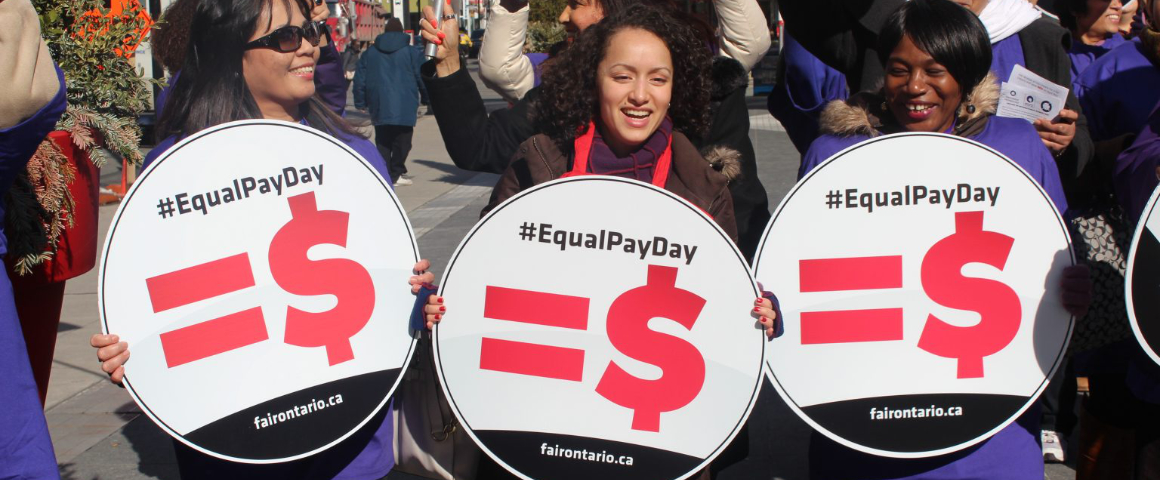Editorial
At the end of August – three years after it was passed in 2018 – Canada’s federal pay equity law comes into force for workers in federally regulated industries. It’s a milestone that is being celebrated by unions, equity seeking women’s organizations and working-class women generally.
We should all celebrate with them.
The gender pay gap is one of the most widely recognized indicators of inequality for women. Despite the fact that pay equity has been part of Canadian law since the 1977 Canadian Human Rights Act (yes, nearly a half-century ago) women continue to be paid significantly less than men.
But how significant is the gap?
The answer depends on how the wage gap is measured.
The Canadian Women’s Foundation describes three main ways of measuring the gender wage gap. First, we can compare the hourly wages of full-time working women to those of men. This measurement shows that women earn roughly 87 cents for every dollar earned by a man. The big problem with this method is that it excludes the reality of part-time work, which women occupy much more commonly than men.
The second method is to compare the annual earnings of full-time workers. According to this measurement, women workers earn approximately 75 cents for every dollar earned by men. This is a more inclusive measurement than the first method, but it still excludes the disproportionately large group of part-time women workers.
The third method compares the annual earnings for both full-time and part-time workers. This is the most comprehensive of the three, because it includes the reality that more women work part-time and that part-time workers are generally lower paid that their full-time equivalents. By this measurement, women earn an average of 69 cents for every dollar earned by men.
So, depending on the comparison method used women experience a wage gap of at least 13 percent and as high as 31 percent. Importantly, as the measurement includes a more inclusive scope of women’s work experience, the gap gets much larger. It widens even further for Indigenous, Black and racialized women.
Internationally, this country is doing a terrible job at closing the wage gap. Out of 43 countries ranked by the OECD, Canada has the 8th highest gender pay gap. Between 1981 to 2018, the gap decreased by 21 percent – at that rate, it will take 139 years for the gap to be closed.
So, why the slow progress?
Part of the answer lies in the sheer magnitude of the pay gap, when measured across the entire economy.
Putting a dollar figure on the gender wage gap is a bit tricky, but we know that there were 15.8 million people working in Canada in 2018, of whom 7.8 million were women. That same year, the average weekly wage was $984, so the total annual earnings among all workers were somewhere around $808 billion. Using the overall annual earnings gap of 31 percent, we can calculate that men earned around $478 billion and women earned around $330 billion.
The difference is huge – $148 billion in lost wages for women. Every year.
Of that, around $100 billion is from the private sector, comprising a whopping proportion of corporate profit. It’s a stark indication of how deeply the gender wage gap is rooted in, and reinforces, the gender division of labour within capitalism.
From a legislative point of view, there is some amount of light at the end of this long tunnel – after the law comes into force, employers have three more years to implement it. In the process, the four provinces that don’t have pay equity legislation will be strongly pressured to step up.
Still, that three-year lag means that, for working women, pay equity is still at least $450 billion away…



